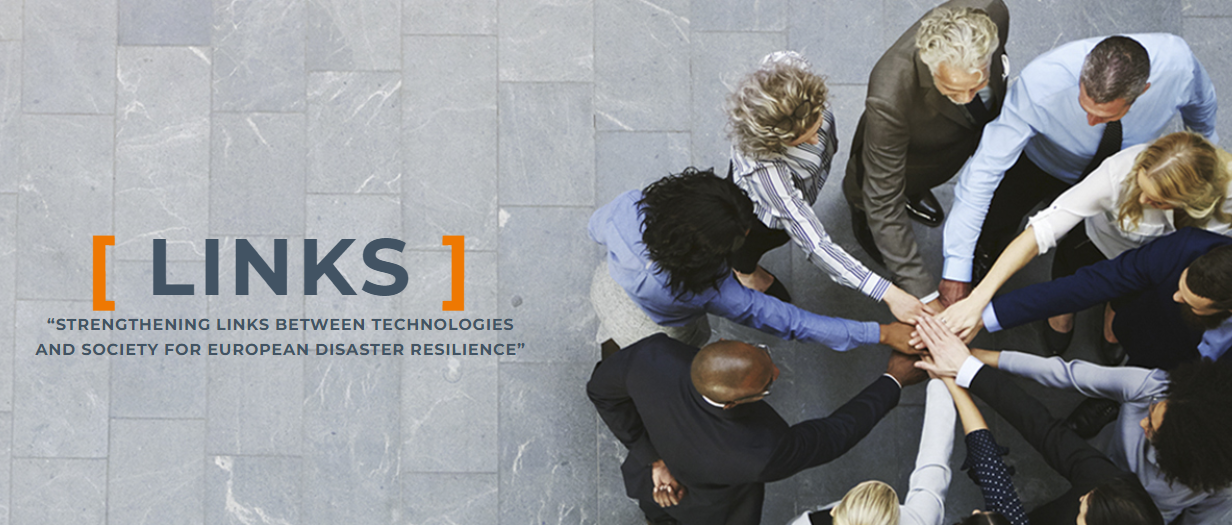LINKS - Strengthening links between technologies and society for European disaster resilience
LINKS aims to improve disaster resilience in Europe by strengthening links between technologies and society with a focus on the use of Social Media and Crowdsourcing in disasters.
Description
LINKS ‘Strengthening links between technologies and society for European disaster resilience’ is a project funded by the European Commission under the Horizon 2020 Research and Innovation Programme. The aim of LINKS is to consolidate knowledge on the uses of Social Media and Crowdsourcing (SMCS) for disaster risk management. The results feed into a strategic Framework with useful products for creating more disaster resilient communities.
LINKS sets out to achieve a number of core objectives:
1. Understanding of the uses of smcs in disaster risk management
2. Consolidating that diverse knowledge into a strategic framework
3. Establishing a community to use and further develop the framework within disaster risk management practices
The outputs of the LINKS project feed into the development of the LINKS Framework.The Framework is a knowledge resource for disaster management organizations and other relevant stakeholders, to guide them in application of SMCS in disasters. It consists of different products such as libraries on technologies, guidelines, and use cases for applying SMCS in disaster risk management.
The LINKS Community Center (links.communitycenter.eu) is the online interface for stakeholders to access and contribute to the resources in the LINKS Framework. Through the Community Center, stakeholders can be guided on strategic learning paths based on themes (e.g. engaging volunteers through social media and crowdsourcing) or freely explore the knowledge and resources in the Framework. They may also engage with other multidisciplinary stakeholders to exchange knowledge and experiences as part of the LINKS Community.
The LINKS consortium brings together the wide range of experience and expertise in the areas of disaster management and governance from 15 participating organizations and 2 associated partners across Europe (Belgium, Denmark, Germany, Italy, Luxembourg, the Netherlands) and associated (Bosnia & Herzegovina, Japan).
Did the Sendai Framework change or contribute to changes in your activities/organization? If so, how?
LINKS is both guided by and contributes to the Sendai Framework for Disaster Risk Reduction.
LINKS particularly contributes to Priority 1, 2 and 4 of the Sendai Framework through its activities to strengthen links between technologies and society for improved European disaster resilience. These activities contribute to understanding disaster risk, strengthening risk governance, and enhancing preparedness.
What led you to make this commitment/initiative?
What was your position before making this Voluntary Commitment / prior to the Sendai Framework?
In recent years, social media and crowdsourcing (SMCS) have been integrated into crisis management for improved information gathering and collaboration across European communities. The effectiveness of SMCS on European disaster resilience, however, remains unclear owing to the diversity among disaster risk perception and vulnerability (DRPV), disaster management processes (DMP) and disaster community technologies (DCT) across Europe today.

